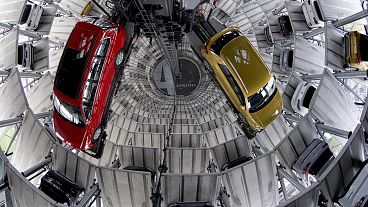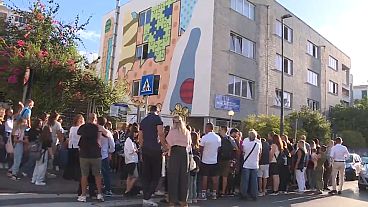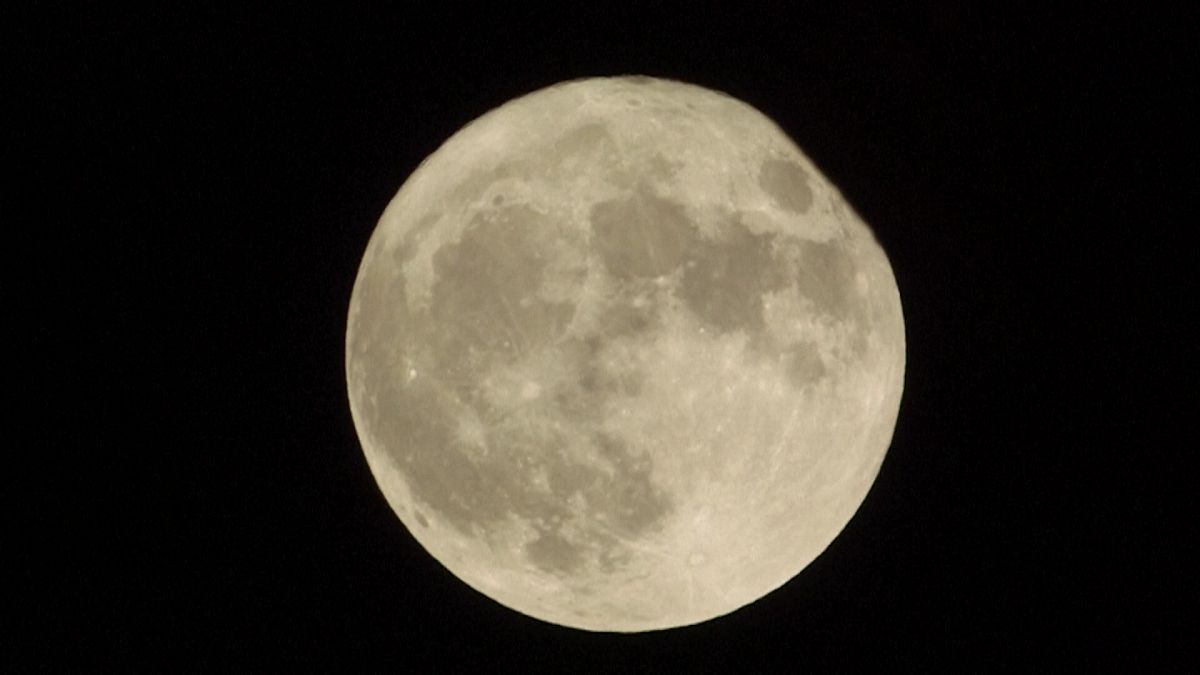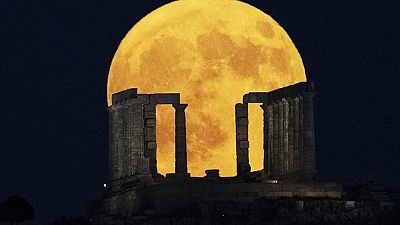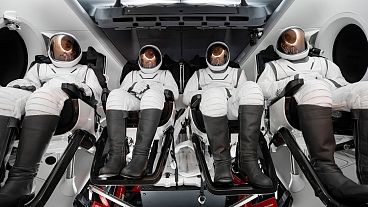Watch the astronomical spectacle on Euronews' live feed on Monday evening or find out where in Europe you’ll have the best chance to see it the clearest.
Stargazers will get the clearest view on Monday night of the first of four supermoons this year as it rises this week.
A supermoon is not an official astronomical term but is typically used to describe a full Moon within at least 90 per cent of perigee, or the point it orbits closest to Earth.
The Moon’s orbit around Earth is not a perfect circle, and its distance from us varies.
The Moon is on average about 384,400 km from Earth, but on Monday night, it will be about 23,000 km closer – nearly twice the diameter of our planet. This proximity will enhance the Moon's brightness and size, giving it a more imposing presence in the night sky.
At its closest point, the full Moon can appear up to 14 per cent larger and 30 per cent brighter than when it is at its furthest point from Earth, known as apogee.
What is a blue supermoon?
According to NASA, this supermoon will also be a Blue Moon, a rare event that happens every two to three years.
A Blue Moon occurs either when there are two full moons within a single calendar month or when there are four full moons within a single season. This time it’s the latter.
However, the Moon will not actually appear blue despite the name.
NASA says, on rare occasions, the Moon can appear blue typically due to smoke or dust in the atmosphere.
The Super Blue Moon will appear full for three days, according to NASA, from Sunday morning through early Wednesday morning, with the closest point to Earth on Monday at 8.26 PM CET.
The next one will be even closer, on the night of September 17 into the following morning, nearly 4,484 km closer than the one in August.
October’s supermoon will be the year’s closest at 357,364 km from Earth, followed by November’s supermoon at a distance of 361,867 km.
A partial lunar eclipse will also unfold that night, visible in much of the Americas, Africa and Europe as the Earth’s shadow falls on the Moon, resembling a small bite.
How can I watch it in Europe?
Depending on the weather forecast for your region, you should be able to see the Super Blue Moon.
In the UK, it looks as though Monday evening will be a cloudy or wet affair with rain forecast for much of the country, particularly Scotland, Wales, and parts of northern England.
There is a Yellow warning in place in southwest Scotland for heavy rain.
"The weather forecast is not looking too favourable this evening, with cloud and outbreaks of rain spreading eastward across the UK," Andrea Bishop, Met Office spokesperson told Euronews Next, said.
"The far east of East Anglia and southeast England may see the supermoon before the cloud moves in. Then during the early hours onwards, northern and western areas will see clearing skies, allowing the moon to be visible until dawn."
It is forecast to be a clear night for much of the continent with very little cloud cover or precipitation.
Watch our live feed of the Moon above as it rises so you don’t miss out, regardless of the weather.
Double treat: a supermoon and meteor shower
The Super Blue Moon on Monday night will be accompanied by Saturn which will sit at 1.5 degrees above the eastern horizon.
NASA says Saturn's bright moon Titan and its rings should be visible through a telescope.
However, We won't be able to see the "classic" view of Saturn with its rings until 2026 as the rings will be edge-on to the Earth by early 2025.
According to NASA, this particular lunar cycle also brings the chance to witness two meteor showers: the Aurigids, peaking on the morning of August 31, and the September Epsilon Perseids, peaking on the morning of September 9.
Although these showers are minor compared to the Perseids seen on August 12 which peak at 100 meteors per hour the morning of August 12.
With a peak of around 10 meteors per hour for the Aurigids, they can still offer a beautiful display in the Northern Hemisphere if away from urban light pollution.
For more on this story, watch the video in the media player above.

